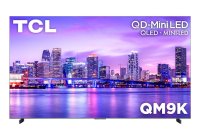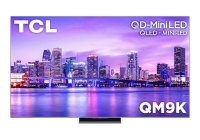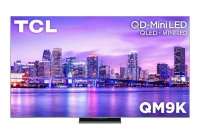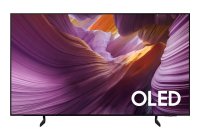The Ultimate Checklist for Buying a Smart TV in 2025
Smart TVs have become an essential part of modern homes, offering a seamless mix of entertainment, convenience, and cutting-edge technology. However, with so many brands, models, and features flooding the market in 2025, choosing the right smart TV can feel overwhelming. Don’t worry — this ultimate checklist will help you navigate the maze and find the perfect smart TV for your needs.
1. Screen Size: Finding the Right Fit
Why It Matters:
The size of your TV should complement your room size and viewing distance for an optimal experience.
Key Tips:
Measure Your Room: Ensure the screen size fits the available space without feeling cramped.
Viewing Distance:
For 4K TVs: 1–1.5 times the screen size.
For 1080p TVs: 2–3 times the screen size.
Popular sizes in 2025 include 55-inch, 65-inch, and 75-inch, but always choose what suits your room best.
2. Display Technology: Choose Your Picture Quality
Options to Consider:
OLED: Perfect blacks, infinite contrast, and vibrant colors — ideal for movie enthusiasts.
QLED: Bright and vivid display with excellent performance in well-lit rooms.
Mini-LED: Better brightness and contrast than standard LEDs, a great middle ground.
LED/LCD: Budget-friendly but lacks the premium quality of OLED or QLED.
8K vs. 4K:
4K is standard for most content and offers incredible clarity.
8K provides unparalleled resolution but has limited content availability.
Recommendation:
If you’re a movie lover, go for OLED. For bright rooms, QLED or Mini-LED is a great option.
3. Refresh Rate: For Smooth Motion
What to Look For:
60Hz: Basic refresh rate, fine for standard TV viewing.
120Hz: Ideal for sports, action movies, and gaming.
VRR (Variable Refresh Rate): Perfect for gamers using PS5, Xbox Series X, or PCs.
4. Operating System: User Interface and Apps
Popular Smart TV Platforms in 2025:
Google TV: Wide range of apps and Google Assistant integration.
Tizen (Samsung): Sleek and fast with exclusive Samsung features.
WebOS (LG): Intuitive and easy to navigate.
Roku: Simple interface with excellent streaming options.
Fire TV (Amazon): Great for Alexa users and Prime members.
Tip:
Choose a platform that supports your favorite apps (Netflix, Disney+, YouTube, etc.) and voice assistants (Google Assistant, Alexa).
5. Connectivity Options: HDMI, USB, and Beyond
HDMI Ports:
Minimum 3 HDMI ports for gaming consoles, streaming devices, and soundbars.
Look for HDMI 2.1 for features like 4K@120Hz, eARC, and VRR.
USB Ports:
At least 2 USB ports for external storage or peripherals.
Wireless Options:
Wi-Fi 6: Faster and more reliable internet connectivity.
Bluetooth 5.2: For wireless audio devices like headphones and soundbars.
6. Sound Quality: Built-In or External?
Built-in Audio:
Check for Dolby Atmos or other surround sound technologies for immersive sound.
TVs with 20W or higher output usually deliver decent sound for casual use.
Soundbars:
For cinema-like audio, invest in a good soundbar or home theater system.
Look for TVs with HDMI eARC for high-quality audio passthrough.
7. HDR Support: Vibrant Colors and Contrast
Key HDR Formats:
HDR10: Basic HDR standard, supported by most TVs.
Dolby Vision: Superior dynamic HDR with better brightness and color depth.
HDR10+: Samsung’s version of dynamic HDR.
Tip:
Go for TVs with Dolby Vision and HDR10+ support for the best viewing experience.
8. Gaming Features: For the Gamers
Must-Have Features:
HDMI 2.1: Supports 4K gaming at 120Hz.
Low Input Lag: Below 15ms for faster responsiveness.
Game Mode: Optimizes settings for smooth gaming.
Additional Features:
NVIDIA G-Sync or AMD FreeSync for a tear-free gaming experience.
9. Energy Efficiency: Save Money and the Planet
What to Look For:
TVs with Energy Star Certification.
Power-saving modes to reduce electricity consumption.
OLED TVs are generally more energy-efficient compared to LCDs.
10. Budget: Value for Money
How to Plan:
Entry-Level TVs: $300–$600 for basic 4K TVs.
Mid-Range TVs: $700–$1,200 for QLED or Mini-LED models.
Premium TVs: $1,500+ for OLED or 8K TVs.
Tip:
Focus on features that matter most to you instead of paying extra for features you might not use.
11. Brand and Warranty
Trusted Brands in 2025:
Samsung, LG, Sony, TCL, Hisense.
Warranty:
Look for at least a 1-year warranty and extended warranty options for peace of mind.
Final Thoughts
Buying a smart TV in 2025 requires balancing technology, features, and budget. By following this checklist, you can ensure that your next TV is perfectly suited to your lifestyle. Whether you’re a movie buff, a gamer, or a casual viewer, there’s a smart TV out there that’s just right for you.
Happy TV shopping!



